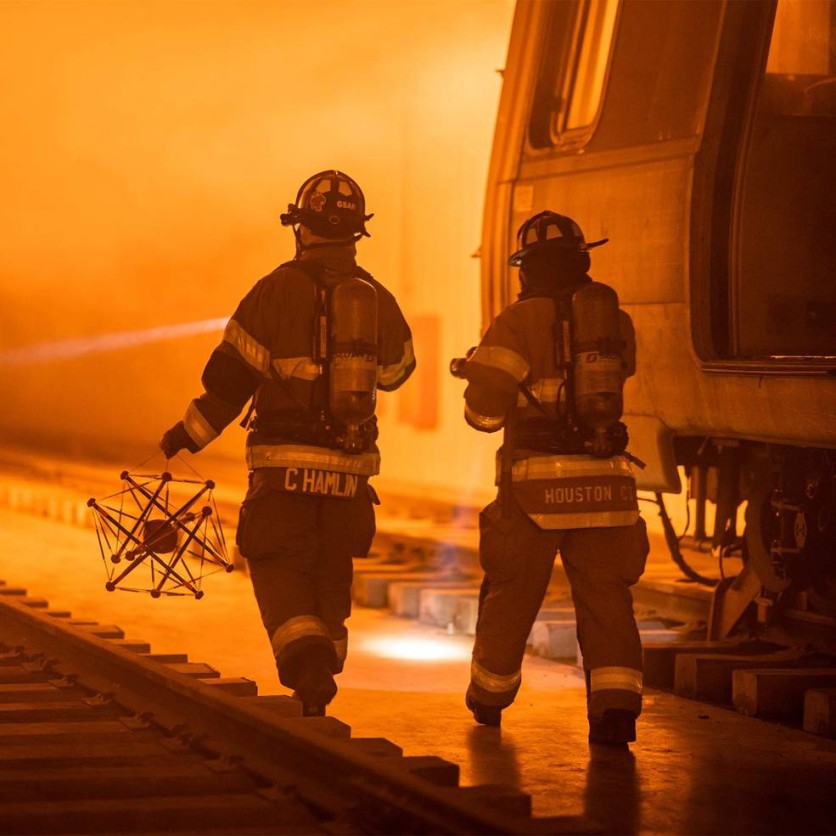NASA's cutting-edge spherical robots, initially devised for exploring Mars and the Moon, have unexpectedly found a new purpose right here on our home planet.
Dr. Alice Agogino, a highly regarded researcher, has discerned the potential for her groundbreaking NASA-funded technology to be utilized in disaster response scenarios.
Equipped with specialized sensors, these spherical robots have proven to be invaluable in collecting crucial data at the sites of fires, crashes, and other calamities, aiding first responders in assessing risks and devising effective strategies.

Squishy Robotics
While researching the perils and devastating consequences of disaster response, Dr. Agogino had an epiphany. She realized that her robots, when equipped with the appropriate sensors, could effectively gather vital information, enabling first responders to evaluate dangers such as toxic gas leaks and formulate appropriate action plans.
At the time, Dr. Agogino served as the director of the Berkeley Emergent Space Tensegrities Lab at the University of California, Berkeley.
Driven by this revelation, she co-founded Squishy Robotics Inc., a Berkeley-based company specializing in the production of impact-resistant and customizable robots designed for public safety, military, and industrial applications.
Agogino's robots feature a ball-shaped skeleton made of rods and elastic cables, forming a tension network that disperses impact and aligns with the principle of tensegrity.
The term "tensegrity" was coined by architect R. Buckminster Fuller in the 1960s, who also popularized geodesic domes as another example of this structure.
NASA was captivated by the robots' ability to endure high falls and their collapsible design for efficient transportation. In 2014, Agogino and her UC Berkeley lab received $500,000 in Early Stage Innovations (ESI) funding from NASA's Space Technology Research Grants program.
This funding aimed to accelerate the development of pioneering space technologies with significant potential.
Withstanding Drops from Planetary Orbits
Agogino and her team embarked on the development of probes designed to withstand drops from planetary orbits or larger spacecraft.
These probes carry delicate sensors and utilize rolling and jumping to navigate uneven terrains, enabling them to conduct missions and scientific explorations on celestial bodies.
Terry Fong, the chief roboticist at NASA's Ames Research Center, likened these robots to the Mars Curiosity and Perseverance rovers.
Unlike their predecessors, which required a complex landing system, the tensegrity robots serve as self-contained landing devices. Their ability to withstand significant falls allows them to continue their missions without damage.
Tensegrity devices are easily transportable due to their collapsible design. Agogino ships them in a folded-flat configuration, protecting instruments and sensors at the center.
This maximizes mass utilization beyond the landing. NASA explores Earth science applications, such as monitoring glaciers. Tensegrity robots ALSO enable instrument deployment in inaccessible areas.
Squishy Robotics interviewed 300 first responders and incorporated miniaturized chemical gas sensors into their tensegrity robots.
These robots can be dropped by aircraft to gather data before firefighters enter. Currently, only stationary robots are available, but mobile models are being developed.
The collected data guide firefighters' decisions on wearing hazardous gear, potentially saving up to an hour of prep time. Squishy Robotics also collaborates with major fire departments and has reseller agreements.
Additionally, tensegrity robots aid in bomb defusal and monitor gas/electric lines. They contribute to wildfire prevention, monitoring high-risk areas, responding to reports, and ensuring complete fire extinguishment.
Related Article : How NASA Can Melt Moon: An In-Depth Look to Bringing 3D Printing to Mars


![Apple Watch Series 10 [GPS 42mm]](https://d.techtimes.com/en/full/453899/apple-watch-series-10-gps-42mm.jpg?w=184&h=103&f=9fb3c2ea2db928c663d1d2eadbcb3e52)


